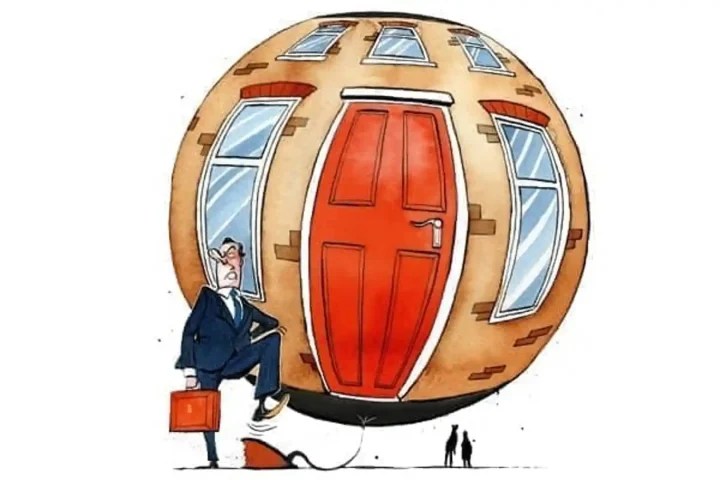It’s hard to imagine the housing crisis getting much worse. But according to the front page of today’s Times, the prospect of buying one’s first home may get pushed even further out of reach.
According to the newspaper, officials in No.10 and the Treasury are working on plans to revive ‘Help to Buy’. This was the supposedly ‘affordable’ housing scheme which enabled first-time buyers to purchase a property with a 5 per cent deposit and access an equity loan from the government worth up to 40 per cent of the property, paid back interest-free for five years. Help to Buy came to an end in March, but it’s been briefed that Rishi Sunak may be considering a new version of the scheme for the Conservatives’ next election manifesto in a bid to offer wannabe homeowners a glimmer of hope for getting on the housing ladder.
There is no solution to the current housing crisis that does not include building a significant number of new properties
Goodness knows serious action is needed. The millennial generation has suffered greatly from successive government failures to increase the country’s housing stock. The overall cost of buying one’s first home has increased by two-thirds over the past 50 years, which explains why home ownership for this generation of people in their 30s has plummeted compared to previous generations.
Those in their prime for house-purchasing years, aged 26 to 41, are buying fewer homes than ever before, according to data firm Outra last year. Even before the pandemic hit, the number of 20 to 34 year olds living with their parents had increased by 46 per cent compared to two decades previous.
Labour is pledging to make good on the failed Tory promise to build 300,000 homes a year, so the Conservative party will need to make some noises about housing before the next election without drawing too much attention to what they’ve failed to deliver. It’s not surprising, then, that the revival of Help to Buy is being considered. On the surface, it’s a scheme that can boast of helping more young people secure a property, that doesn’t get into the details about how many properties are being built, or what’s really on offer.
But Help to Buy is not some neutral scheme. In reality, it makes the housing crisis even more severe. By making homes slightly more accessible to first-time buyers, it ramps up demands for homes even more, while doing nothing to increase supply. As a result, homes actually get more expensive, making it even harder for new buyers to reach necessary deposit levels to secure a mortgage.
A study from LSE in 2020 found that Help to Buy in London, rather than improving affordability, actually increased house prices inside the Greater London area. The study showed that the scheme ramped up house building and construction ‘in areas where planning constraints are less rigid and it is therefore comparably easy to build’. In other words, homes were built in areas where there is far less demand. So in the areas where demand is highest, house prices actually rose.
None of this should be a surprise. Indeed, today’s report in the Times notes that government officials put new Help to Buy announcements on ice around the spring Budget, because of the risk that any such scheme could ‘prove inflationary’. This was certainly the right assessment, but it is not unique to the inflationary shock we’ve most recently experienced coming out of the pandemic.
Help to Buy proved inflationary during the 2010s, as housing supply continued to lag. Without any meaningful changes to the planning system, it will do so again if revived. This means that – apart from the lucky few with the biggest deposits – such a strategy from the Tory party could actually set hopeful homeowners back, rather than propel them into new properties.
The tough political reality is that there is no solution to the current housing crisis that does not include building a significant number of new properties, especially in areas around London and the south east where demand is highest. It’s tricky territory for the Tories: divisions within the party on this issue put a stop to more liberal planning reform last year. But this infighting must be overcome, as an entire generation grows increasingly fearful that they are not just delayed from getting on the housing ladder, but will never be able to do so.







Comments